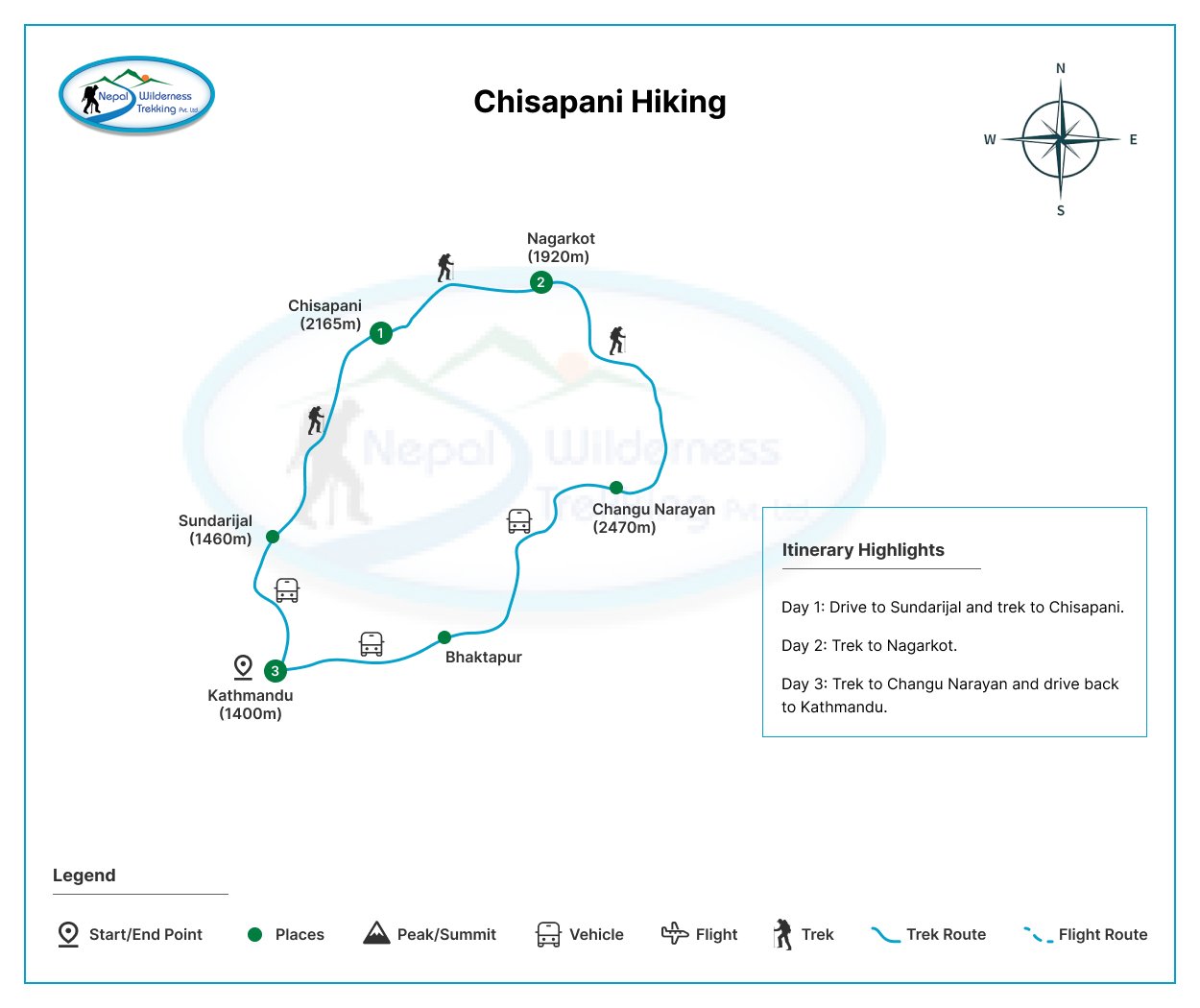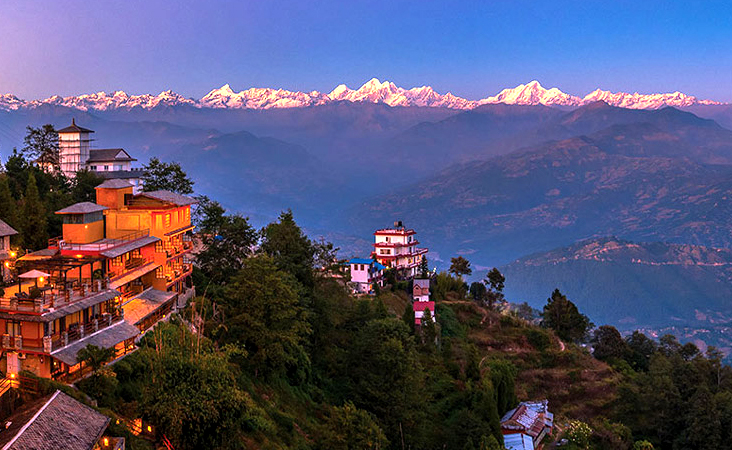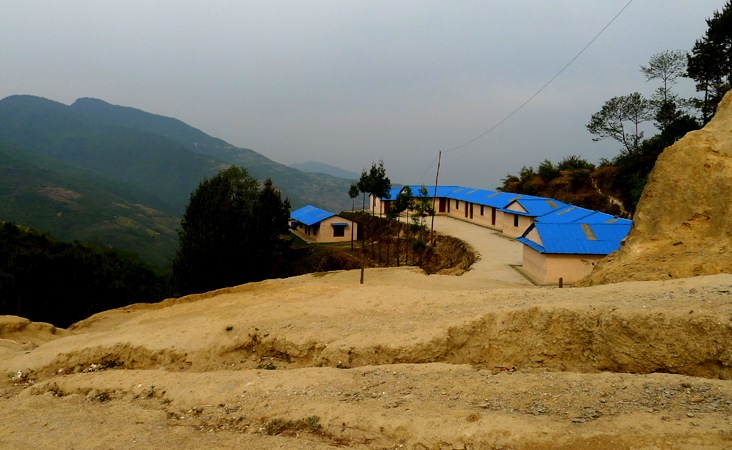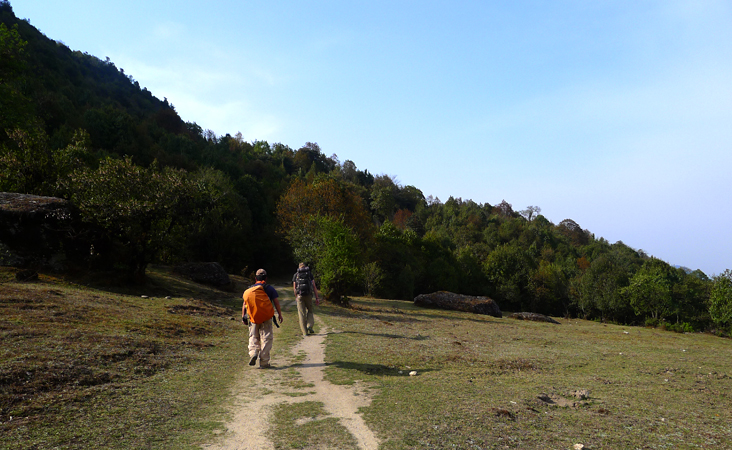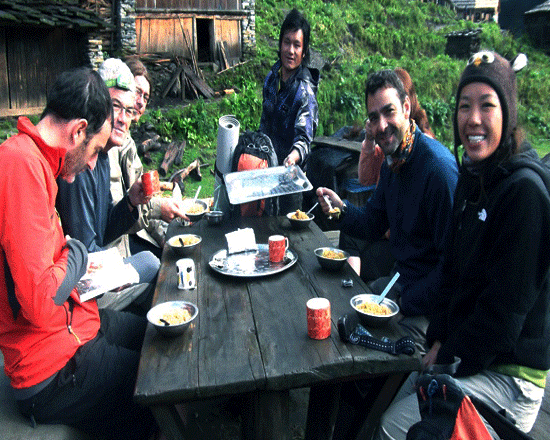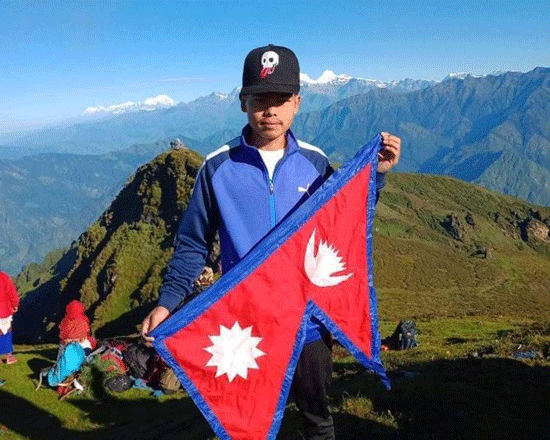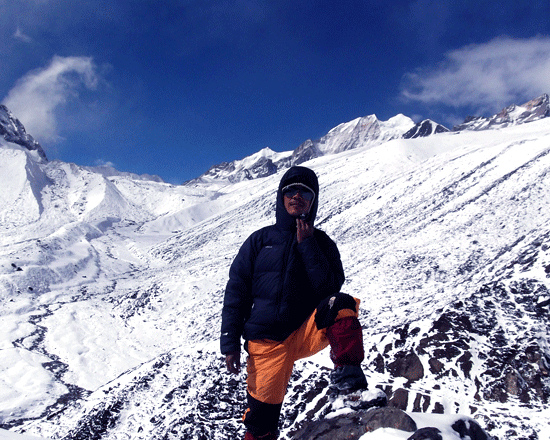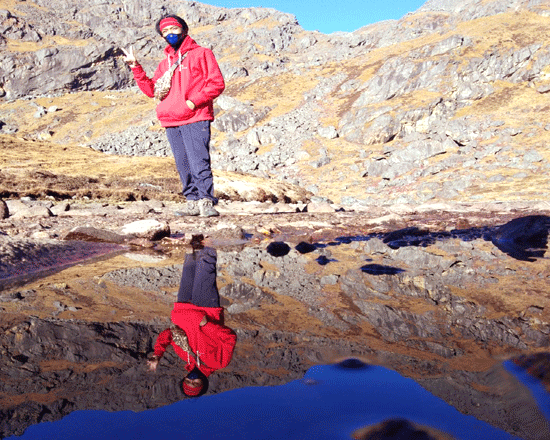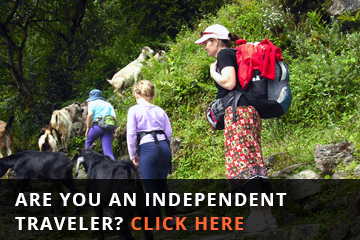Chisapani Nagarkot Trek
Chisapani Nagarkot Trek
Langtang RegionTrip Facts
Since the terrain can be hard and the days long, hikers on these treks should be in good physical condition and have some previous mountain walking experience. Steep climbing may be involved, although it is never necessary to use ropes. Treks at this level can he arranged for periods of 16 to 21 days. Typically, a gradual ascent through a green river valley will lead you up to a number of high passes, where you will reach the altitude of 5416m. Often times, you will get a close insight into the Tibetan culture. Participants should expect to trek above 5416m/17872ft.
Mode of Travel : Land100%
Overview
Chisapani Nagarkot Trek 2 nights 3 days
Chisapani Nagarkot Trek is a delightful and convenient hiking option near Kathmandu, offering a refreshing getaway into nature with glimpses of local life, mesmerizing Himalayan vistas, and captivating sunrises and sunsets from Chisapani and Nagarkot. The hike begins at Sundarijal, a water source in the Kathmandu Valley, at an elevation of 2,500 feet.
Trek distance
To reach Chisapani Nagarkot, the first day’s destination, the hiking trail passes through the enchanting Shivapuri National Park forest. To access the trekking trails within the Shivapuri National Park, covering an area of 159 km. Moreover, domestic and international visitors must obtain a National Park permit at the Sundarijal Checkpost.
You can enjoy a comfortable walk among lush greenery throughout the day on the Chisapani Nagarkot Trek through Shivapuri National Park. Along the way, you will encounter traditional Tamang villages crossing into the valley. As you continue the journey towards Chisapani and Nagarkot, you will be treated to breathtaking views of the world’s highest peak, Mt. Everest, as well as Langtang Ri, Langtang Lirung, Dorje Lakpa, Ganesh Himal, and the majestic Annapurna range on the horizon.A mix of Brahmins, Gurungs, Tamang, and Sherpa communities inhabit the Chisapani and Nagarkot region.
Chisapani Nagarkot Trek offers a variety of trekking options, including shorter three-day treks for those with limited time. Poon Hill Trek and Chisapani Nagarkot Trek are popular choices for quick breaks. These treks allow you to explore the diverse landscapes and cultural richness of Nepal while offering opportunities to witness stunning sunrises, sunsets, and panoramic mountain views, making the Chisapani Nagarkot trek a perfect fit for your journey.
Journey to Chisapani Nagarkot Trek
To begin on the Chisapani Nagarkot trek, your first step is a one-hour drive to Sundarijal, followed by a hike through the Shivapuri National Park Peak, characterized by dense jungles and an eco-friendly environment. The trail meanders through green bushes and towering trees, providing invigorating energy as you listen to the melodious chirping of hummingbirds. As you ascend, you’ll encounter fresh mountain air and stone steps leading up to Borlang Bhanjyang at 2,438 meters. From there, it is a downhill walk to the village of Chisapani.
The Chisapani hike mostly involves uphill sections until you reach Borlang Bhanjyang, followed by a descent to Chisapani, where you can enjoy panoramic mountain views. Borlang Bhanjyang, situated at an elevation of 2,425 meters, marks the highest point of the ridge extending from the Shivapuri Peak Mount.
Beauty of Chisapani Nagarkot Trek
Whether from Chisapani or Nagarkot, the early sunrise reveals the enchanting beauty of the Himalayan range, including the magnificent Mt. Everest towering at 8,848 meters. Nagarkot, perched on the edge of the valley’s small mountains, offers unparalleled views of the mountains and the Kathmandu Valley simultaneously.
Accommodation options in Chisapani include the Dorjelakpa Lodge and tea houses with a traditional trekking style, while Nagarkot boasts a wide range of luxurious hotels featuring comfortable rooms, well settlled dining areas, and extensive menus of Western cuisine. Other treks, such as the Helambu Trek and Gosaikunda Circuit Trek, also commence from the Sundarijal area.
By choosing an experienced guide for your trek, we at Nepal Wilderness Trekking Team are here for you on a two-night, three-day Chisapani Nagarkot trek with the assurance of the trek.
Best hiking at Chisapani Nagarkot
The Chisapani Nagarkot trek can be undertaken throughout the year, except during the monsoon season, which occurs from July to August in Nepal. It is advisable to avoid this period as the trails can become muddy, and the cloudy weather may obscure the majestic views of the Himalayas. However, there are no significant risks associated with trekking to Chisapani Nagarkot during winter, as the route does not reach high altitudes. While days are sunny during winter, nights can be cold and chilly.
Spring and autumn are considered the best seasons for the Chisapani Nagarkot trek. These months offer clear weather, lush greenery, and unobstructed views of the mountains. The spring season from March to May is particularly captivating, as nature bursts with vibrant colors. The forest and trails come alive with various types of flora and fauna, enjoying the warmth after a harsh winter. Similarly, autumn, spanning from September to November, provides a pleasant time to hike, with fresh air after the rain showers have passed. The crystal-clear vistas of the Himalayan mountain range are a sight to behold during this season.
The Chisapani trek in Nepal offers a glimpse into the diverse cultures of the region. Along the trail, you’ll encounter Tamang villages with their traditional stone and wood houses, as well as Newar settlements known for their rich architectural heritage. Other ethnic groups like Brahmins, Chhetris, and Sherpas also contribute to the cultural mosaic of the area. Despite their differences, these communities coexist harmoniously, creating a tapestry of traditions against the backdrop of the Himalayas.
Chisapani Trek Highlights:
- Himalayan Views: Stunning panoramas of Langtang, Ganesh Himal, and Everest (on clear days).
- Scenic Trails: Lush forests, terraced fields, and traditional villages.
- Cultural Experience: Interactions with local Tamang and Sherpa communities and visits to temples and monasteries.
- Accessibility: Easily reachable from Kathmandu, suitable for various fitness levels.
- Nagarkot: Known for its hill station resorts, sunrise/sunset views, and the observation tower.
- Wildlife and Flora: Opportunities to spot deer, monkeys, birds, and diverse plant species in Shivapuri National Park.
- Rejuvenation: A refreshing escape into nature, offering physical activity and mental relaxation.
Chisapani trek distances
- Sundarijal to Chisapani: This part of the trek is approximately 16 kilometers (10 miles) and usually takes about 4-6 hours to complete. The trail passes through the Shivapuri National Park, offering lush forests, waterfalls, and panoramic views of the Kathmandu Valley.
- Chisapani to Nagarkot: This segment is roughly 19 kilometers (12 miles) long. The trek from Chisapani to Nagarkot generally takes about 6-7 hours. This route passes through scenic landscapes, including terraced fields, traditional villages, and dense forests, and eventually leads to the hill station of Nagarkot, renowned for its sunrise views over the Himalayas.
The Sundarijal – Chisapani – Nagarkot distance makes the trek a manageable and enjoyable two-day journey for those looking to experience the natural beauty and cultural richness of the Kathmandu Valley region.
Detail Itinerary
- Day 01: Our Guide and driver will pick you up at your hotel in the morning at 8 AM and drive for approximately 1 hour to Sundarijal, covering a distance of about 12 kilometers. From there, you will begin your trek to Chisapani, situated at an altitude of 1915 meters. The trek will take around 4 to 5 hours of walking through the scenic trails. Once you arrive, you will spend the night at a comfortable lodge.
- Day 02: After enjoying a hearty breakfast, you will embark on a trek to Nagarkot, located at an altitude of 1920 meters. The trek will span over 6 to 7 hours of walking, covering a distance of approximately 25 kilometers. Along the way, you'll be treated to stunning vistas of the surrounding landscapes. You'll spend the night at a lodge in Nagarkot, where you can relax and soak in the serene atmosphere.
- Day 03: Begin your day with a breathtaking panoramic view of the morning sunrise. After breakfast, set out on a trek towards Changu Narayan, which will take about 3 to 4 hours of walking, covering around 10 kilometers. Changu Narayan is renowned for its historical and cultural significance. After exploring the area, you'll be driven back to Kathmandu in a car, completing a distance of approximately 20 kilometers. You'll be dropped off at your hotel, marking the end of your memorable trip.
Cost Included
- Transportation from Kathmandu to Sundarijal by car
- Comfortable lodge accommodation with an attached bathroom throughout your trip
- A delectable selection of meals three times a day (Breakfast, lunch, and dinner) featuring Italian, Chinese, Nepali, Indian, and various European cuisines, chosen from the menu
- Inclusive of Shivapuri park permits and TIMS card
- Transportation from Changunarayan to Kathmandu by car
- Experienced English-speaking trekking guide licensed by the government, familiar with the area.
- One porter for every two to three participants. (Note: An additional cost applies for solo clients requiring a porter.)
Cost Excluded
- Personal equipment
- all beverages, Soft and hard table drinks such as coke, beer,
- drinking water/mineral water, etc. during the trek.
- dessert, etc
- laundry
- personal insurance
- Tip for guide and porter.
| Trip Dates | Trip Price | Confirmed Pax | Trip Status | |
|---|---|---|---|---|
| July 29, 2024 | US$ 250 | Join a Group | Book Now | |
| August 6, 2024 | US$ 250 | Join a Group | Book Now | |
| August 12, 2024 | US$ 250 | Join a Group | Book Now | |
| August 17, 2024 | US$ 250 | Join a Group | Book Now | |
| August 24, 2024 | US$ 250 | Join a Group | Book Now | |
| August 29, 2024 | US$ 250 | Join a Group | Book Now | |
| September 5, 2024 | US$ 250 | Join a Group | Book Now | |
| September 9, 2024 | US$ 250 | Join a Group | Book Now | |
| September 13, 2024 | US$ 250 | Join a Group | Book Now | |
| September 17, 2024 | US$ 250 | Join a Group | Book Now | |
| September 23, 2024 | US$ 250 | Join a Group | Book Now | |
| September 27, 2024 | US$ 250 | Join a Group | Book Now | |
| October 1, 2024 | US$ 250 | Join a Group | Book Now | |
| October 5, 2024 | US$ 250 | Join a Group | Book Now | |
| October 9, 2024 | US$ 250 | Join a Group | Book Now | |
| October 14, 2024 | US$ 250 | Join a Group | Book Now | |
| October 17, 2024 | US$ 250 | Join a Group | Book Now | |
| October 22, 2024 | US$ 250 | Join a Group | Book Now | |
| October 26, 2024 | US$ 250 | Join a Group | Book Now | |
| October 30, 2024 | US$ 250 | Join a Group | Book Now | |
| November 4, 2024 | US$ 250 | Join a Group | Book Now | |
| November 8, 2024 | US$ 250 | Join a Group | Book Now | |
| November 12, 2024 | US$ 250 | Join a Group | Book Now | |
| November 16, 2024 | US$ 250 | Join a Group | Book Now | |
| November 20, 2024 | US$ 250 | Join a Group | Book Now | |
| November 24, 2024 | US$ 250 | Join a Group | Book Now | |
| November 28, 2024 | US$ 250 | Join a Group | Book Now | |
| December 4, 2024 | US$ 250 | Join a Group | Book Now | |
| December 9, 2024 | US$ 250 | Join a Group | Book Now | |
| December 13, 2024 | US$ 250 | Join a Group | Book Now | |
| December 17, 2024 | US$ 250 | Join a Group | Book Now | |
| December 21, 2024 | US$ 250 | Join a Group | Book Now | |
| December 25, 2024 | US$ 250 | Join a Group | Book Now | |
| December 29, 2024 | US$ 250 | Join a Group | Book Now |
Trip Map
